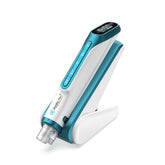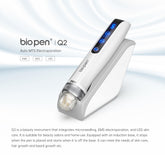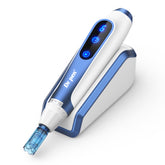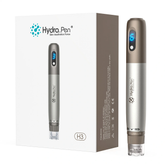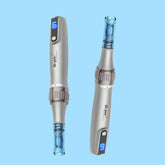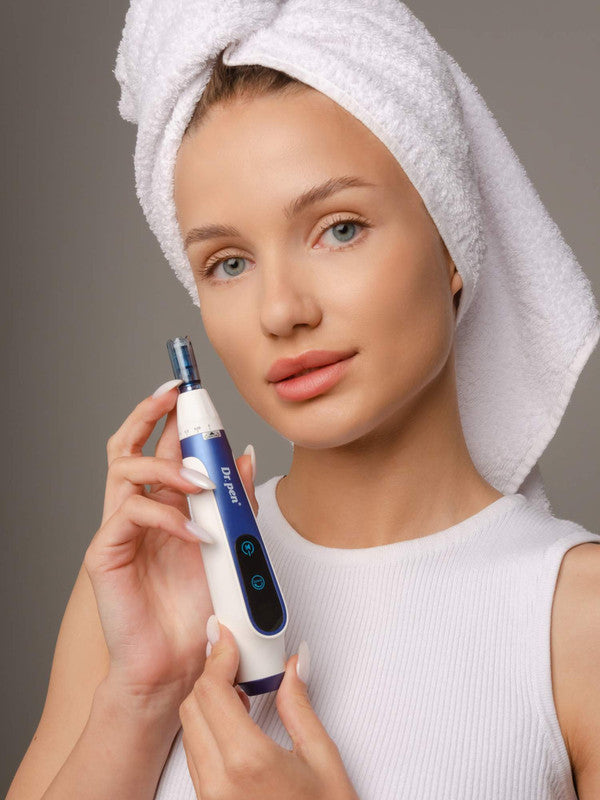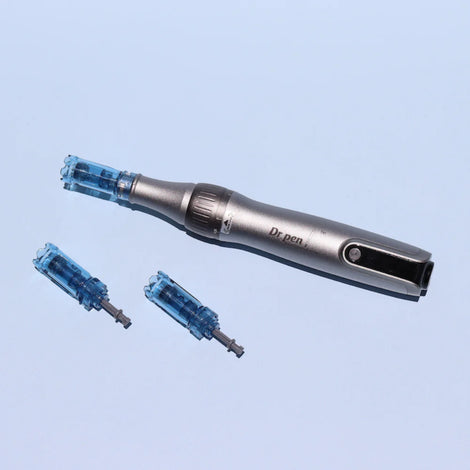Common Mistakes and Correct Practices in Using the Dr. Pen Microneedling Pen
Microneedling is a revolutionary technique in skincare, effectively addressing various skin issues. However, incorrect application can lead to undesirable results. In this article, we will delve into common mistakes made when using the Dr. Pen microneedling pen and the correct practices to follow. Our goal is to help you achieve the best results by using this powerful tool correctly.
Mistake 1: Not Properly Disinfecting the Pen
Why It's Wrong
During microneedling, tiny holes are created in your skin, providing a pathway for bacteria to enter. Failing to properly disinfect the pen increases the risk of infection and can lead to serious skin problems.
The Correct Way
It's crucial to disinfect your Dr. Pen microneedling pen before and after each use. Use 70% isopropyl alcohol for this purpose. Also, remember that the needles are single-use and should be replaced after every session.
Mistake 2: Applying Too Much Pressure
Why It's Wrong
Applying too much pressure during microneedling can cause unnecessary trauma to your skin, extending the healing process and leading to side effects like sensitivity and redness.
The Correct Way
Gently touch the pen to your skin and move it in slow, balanced motions. The Dr. Pen device allows you to adjust the needle depth and speed; use these features to avoid unnecessary trauma to your skin.
Mistake 3: Using the Pen Too Frequently
Why It's Wrong
Microneedling accelerates the skin's renewal process, which requires time to complete. Using the pen too frequently can damage your skin and negatively affect the healing process.
The Correct Way
Adjust the frequency of microneedling according to your skin type and treatment goals. Generally, once every 4-6 weeks is sufficient. If your skin is sensitive or you have specific treatment goals, consider longer intervals between sessions.
Mistake 4: Not Using the Correct Needle Length
Why It's Wrong
Different skin issues require different needle lengths. Using the wrong needle length can make the treatment ineffective or even harm your skin.
The Correct Way
Choose the needle length based on the skin issues you want to treat. For instance, 0.5-1.0 mm needles are suitable for fine lines and wrinkles, while 1.0-1.5 mm needles are better for acne scars and skin tone correction.
Mistake 5: Skipping Post-Treatment Care
Why It's Wrong
After microneedling, your skin becomes more sensitive to environmental factors. Failing to provide the necessary care can negatively affect the healing process and worsen skin issues.
The Correct Way
It's crucial to moisturize, protect your skin from the sun, and use soothing products after microneedling. Use moisturizers containing hyaluronic acid and sunscreen with at least SPF 30 to protect your skin.
Mistake 6: Using Expired or Unsuitable Serums
Why It's Wrong
Expired or unsuitable serums can harm your skin after microneedling and prevent you from achieving the desired results.
The Correct Way
Ensure the serums you use with Dr. Pen are fresh and suitable for your skin type. Serums containing hyaluronic acid, vitamin C, and peptides can help rejuvenate your skin after microneedling.
Mistake 7: Ignoring Skin Reactions and Not Adjusting Accordingly
Why It's Wrong
Every skin type reacts differently to microneedling. Ignoring your skin's reactions can reduce the treatment's effectiveness and harm your skin.
The Correct Way
Pay close attention to your skin's reactions during microneedling. If your skin becomes excessively red or sensitive, reduce the intensity and frequency of the treatment. Listen to your skin and seek help from a dermatologist if needed.
Mistake 8: Not Following a Regular Routine
Why It's Wrong
Inconsistent and irregular microneedling applications prevent you from achieving the desired results and negatively affect your skin's healing process.
The Correct Way
Establish a regular routine for microneedling. Create a plan based on your skin type and treatment goals and stick to it. Regular applications will yield more lasting and effective results.
Mistake 9: Using on Active Acne
Why It's Wrong
Microneedling on active acne can spread bacteria and increase the risk of infection, worsening your acne problem.
The Correct Way
Perform microneedling when your acne has subsided and your skin is more stable. Use appropriate products to treat active acne before safely proceeding with microneedling.
Mistake 10: Not Moisturizing Enough Post-Treatment
Why It's Wrong
After microneedling, your skin can lose moisture, leading to dryness, sensitivity, and irritation. Not moisturizing enough negatively affects the healing process.
The Correct Way
Thoroughly moisturize your skin after microneedling. Moisturizers with hyaluronic acid help maintain your skin's moisture balance and speed up the healing process. Additionally, increase your water intake to hydrate your skin from within.
Mistake 11: The More Redness and Bleeding, the Better" Misconception
Why It's Wrong
Excessive redness and bleeding during microneedling indicate unnecessary damage and overstimulation of the skin. This belief can prolong the healing process and cause unwanted side effects.
The Correct Way
Mild redness during microneedling is normal and a natural response of the skin. However, there should be no excessive redness or bleeding. The Dr. Pen device gently stimulates your skin for optimal results. Apply light pressure and use the correct needle depth to avoid unnecessary damage.
Want More Microneedling Tips?
You can follow us on Instagram! In this community, you can learn tips and tricks about microneedling and be informed instantly about new pens. Our in-house Beauty Consultant also answers your questions.
We also carry out special promotions and discounts on Instagram.




